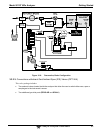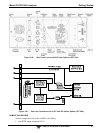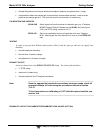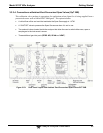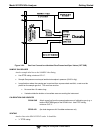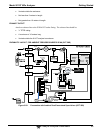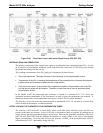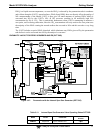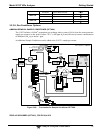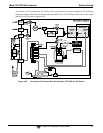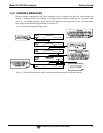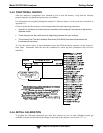
Model 9110T NOx Analyzer Getting Started
Teledyne Analytical Instruments 70
Figure 3-26: Rear Panel Layout with Internal Span Source (IZS) OPT 50G
INTERNAL SPAN GAS GENERATION
The primary component of the internal span option is a permeation tube containing liquid NO
2.
As zero
air is passed over a permeable membrane on the end of the tube, molecules of NO
2
slowly pass through
the membrane mixing with the zero air.
The resulting concentration of the NO
2
span gas is determined by three factors:
Size of the membrane: The larger the area of the membrane, the more permeation occurs.
Temperature of the NO
2
: Increasing the temperature of the permeation tube increases the pressure
inside the tube and therefore increases the rate of permeation.
Flow rate of the zero air: If the previous two variables are constant, the permeation rate of the NO
2
into the zero air stream will be constant. Therefore, a lower flow rate of zero air produces higher
concentrations of NO
2
.
In the Model 9110T the permeation tube enclosure is heated to a constant 50° C (10° above the
maximum operating temperature of the instrument) in order to keep the permeation rate constant. A
thermistor measures the actual temperature and reports it to the CPU for control feedback.
The flow rate of zero air across the permeation tube is maintained at 50 ± 10 cm³/min by a critical flow
orifice located in the analyzer’s exhaust manifold.
NITRIC ACID AND THE CHEMISTRY OF NO2 PERMEATION TUBES
The reaction of H
2
O with NO
2
to form HNO
3
(nitric acid) takes place whenever water and NO
2
are
present in the same gas mixture. In the 9110T this is mitigated as much as possible by passing the air
supply for the span gas generator through a special dryer, however the permeable membrane of the NO
2
tube will still allow H
2
O from the ambient environment to slowly collect in the tube at increasingly
higher concentrations. Over time this results in the presence of HNO
3
in the permeation tube which is
exuded into the 9110T’s pneumatics along with NO
2
.



